The CANT Z.506 Airone ("Heron") was a trimotor floatplane designed and manufactured by CANT from 1935. It emerged as a transport and postal aircraft with "Ala Littoria" and established 10 world records in 1936, 10 in 1937, becoming an asset for Mussolini's propaganda. In WW2 it was used as a reconnaissance aircraft as well as torpedo bomber and air-sea rescue plane or ambulance. It saw action in Spain with volunteers, was tested by Poland, and served for the Italian Regia Aeronautica as well as the Regia Marina and after the Italian surrender in September 1943, with the Aeronautica Cobelligerante del Sud.
Many were also used by the Aeronautica Nazionale Repubblicana and the Luftwaffe. The Z506 is probably one of the very best floatplanes ever built by Italy and often compared to the equally good and-based SM79 Sparviero. It had an old-school wooden structure, yet very sturdy for handling rough seas, was fast, had a good range was was overall reliable. The SAR used the Z506B until 1959. #ww2 #navalaviation #italiannavy #regiamarina #aviazioneausilariaperlaregiamarina #z506airone #floatplane #trimotor The CANT Z.506 was first envisioned in 1934 as a 12-14-seat transport twin-float floatplane for the Ala Littoria. It was to be powered by three 455 kW (610 hp) Piaggio Stella P.IX radial engines and derived from the larger and heavier Z.505 seaplane. In 1934 Ala Littoria indeed issued a specification for a new modern, fast seaplane for its commercial routes by sea. CRDA took part in the competition with Filippo Zappata's design, low-wing with three-engine and having two floats under the nacelles and moved outwards, for better stability at sea. It was a redical departure from the typical configuration used until then.
The CANT Z.506 was first envisioned in 1934 as a 12-14-seat transport twin-float floatplane for the Ala Littoria. It was to be powered by three 455 kW (610 hp) Piaggio Stella P.IX radial engines and derived from the larger and heavier Z.505 seaplane. In 1934 Ala Littoria indeed issued a specification for a new modern, fast seaplane for its commercial routes by sea. CRDA took part in the competition with Filippo Zappata's design, low-wing with three-engine and having two floats under the nacelles and moved outwards, for better stability at sea. It was a redical departure from the typical configuration used until then.
The first flight of "MM.268" took place on 10 July 1935. Tests revealed the model was underpowered, and failed to meet specs. Ala Littoria then decided to test Z.505 with a con,ventional undercarriage, hoping eliminating the drag would improved specs. chassis. It was tested alongside the CANT Z.1011. Not adopted for passengers, the Z.505 was purchased as a mail-plane from 1936, the first only entering service as "I-ZAPP" the "I" standing for Zapatta. In 1938 the Comando Aeronautica dell Egeo requisitioned it as personal aircraft of governor Cesare Maria de Vecchi (registred I-VACI) and it operated until the summer of 1941 in the Aegean Islands.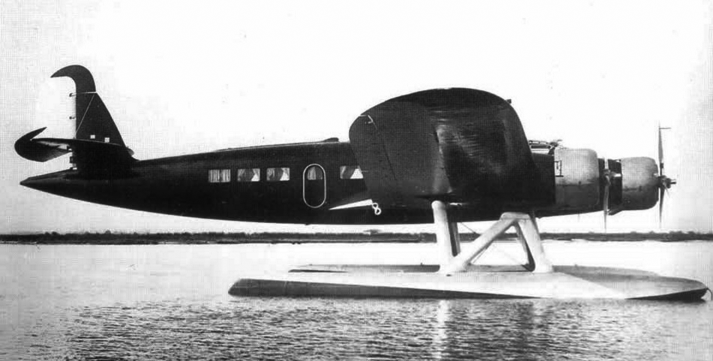
Z506A, transport variant

Same taking off
Meanwhile work done by Zapatta on the Z506, a remotorized variant, led to the development of the 1936 Z.506A, powered by more powerful 560 kW (750 hp) Alfa Romeo 126 RC.34 nine cylinder radial engines. Each gave 780 CV on takeoff and achieved specs, being adopted by Ala Litorria. They had a wooden structure, covered tulipier wooden lamellas. Wings were composed of three box-type spars, linked by wooden wing-ribs, themselves covered by plywood. Only the floats, 12.50 metres (41 ft) long, were made of duraluminium as they were in contact with water. They were covered in 'Chitonal', a new type of plastic like coating for perfect waterproofing.
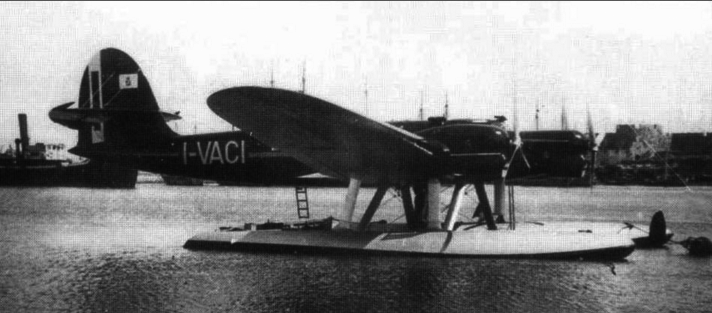
I-ALAL, first Z506A model of Ala Littoria

I-POLA, 612ª SAR/transport stormo in Stagnoni
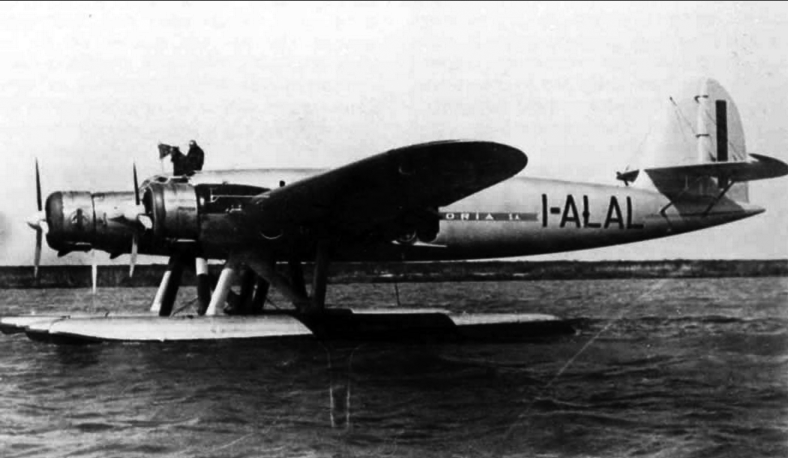
I-VACI, personal transport of governor Cesare Maria de Vecchi
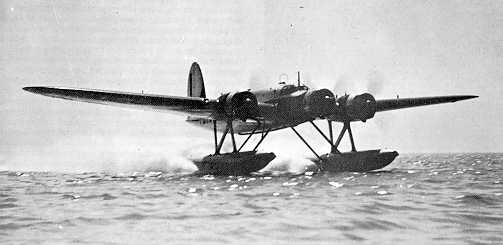
Z506 taking off
As Ala Littoria was impressed, order was made of a serie. The Z.506A, flown mostly by Mario Stoppani, set about twenty altitude, speed and distance records for its class between 1936 and 1938. It held a world record for 308.25 km/h (191.54 mph) speed achieved over 5,000 km (3,100 mi), 319.78 km/h (198.70 mph) over 2,000 km (1,200 mi), 322.06 km/h (200.12 mph) over 1,000 km (620 mi) notably. This boosted Italy's records, a tool widely used by Mussolini to boast Italian's technology superiority, and the Z506A doubled down by a 5,383.6 km (3,345.2 mi) closed circuit at cruise speed. It also held record for the heaviest load of 2,000 kg (4,400 lb) at 7,810 m (25,620 ft) in ceiling and 5,000 kg (11,000 lb) at 6,917 m (22,694 ft). CANT delivered 15 civilian Z506A for Ala Littoria, which boasted on its own brochure such records to attract new international passengers.
Preserie models
Although the Miliyary at the time already had the Z506 Gabbiano based on its own specs, the Navy in particular started to be interested by the Z506 as well as the Regia Aeronautica. Both wanted a military version and Zapatta thus created the Z.506B. This version was to be armed with bombs, torpedoes, and machine guns posts and thus, needed to be more powerful, so it was procured threee 560 kW (750 hp) Alfa Romeo 127 RC 55 engines. The Z506B first flew on August 19, 1935, two prototypes were made, and they also became record breakers. In early 1936 tyhe model was accepted for production, which started in 1936, ramping up in 1937-1939.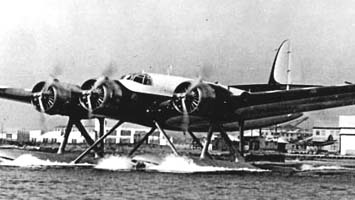 Meanwhile a larger transport version of the Z.506A was built in 1937, the Z.509. It was Designed as larger and heavier, based on an improved, roomier Z506A fuselage and powered by three Fiat A.80 R.C.41 18-cyl. air-cooled radial piston engines. This enabled it to reach 425 km/h (264 mph, 229 kn) at 4,500 m (14,760 ft) for a cruise speed of 349 km/h (217 mph, 189 kn) and range of 3,748 km (2,329 mi, 2,024 nmi) and up to 3,988 km (2,478 mi; 2,153 nmi), 8,000 m (26,240 ft) altitude. Ala Littoria rerceived three in 1937 as Mail Plane, transatlantic postal service to South America. Further development was abandoned in 1940.
Meanwhile a larger transport version of the Z.506A was built in 1937, the Z.509. It was Designed as larger and heavier, based on an improved, roomier Z506A fuselage and powered by three Fiat A.80 R.C.41 18-cyl. air-cooled radial piston engines. This enabled it to reach 425 km/h (264 mph, 229 kn) at 4,500 m (14,760 ft) for a cruise speed of 349 km/h (217 mph, 189 kn) and range of 3,748 km (2,329 mi, 2,024 nmi) and up to 3,988 km (2,478 mi; 2,153 nmi), 8,000 m (26,240 ft) altitude. Ala Littoria rerceived three in 1937 as Mail Plane, transatlantic postal service to South America. Further development was abandoned in 1940.
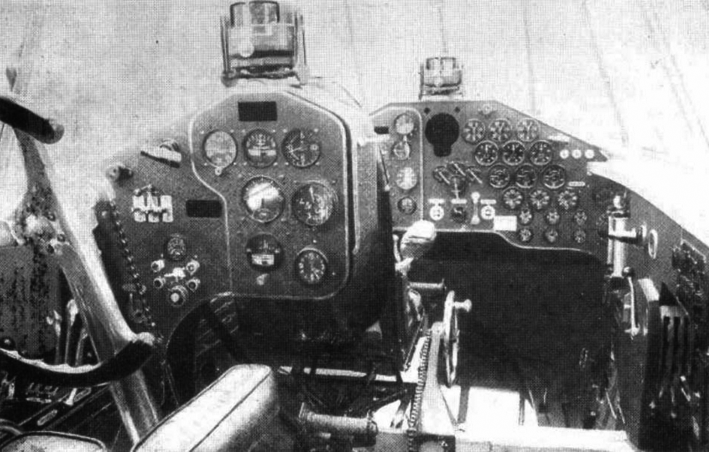
Dashboard
CANT Z.506B production by CANT ("Cantieri Riuniti dell 'Adriatico") in Monfalcone was also passed on to "Cantiere Navale Triestino" (CRDA CANT) in Finale Ligure and reached 314 floatplanes, until production was passed on to Piaggio under licence in January 1943 and reached 320+ aircraft total such was the demand. The model was mostly a roomier, more powerful variant of the Z506A. The final version had a crew of five: Pilot and co-pilot, a navigator/bombardier, and 2-3 gunners (see armament).
The fuselage had a wooden structure covered in tulipier wooden lamellas with wings structured with three box-type spars and wooden wing-ribs, all covered by plywood. Like the Z506A, duraluminium floats were covered in artificial Chitin ('Chitonal') a composite coating using a long-chain polymer of N-acetylglucosamine, amide derivative of glucose. Present in nature it was atificially recreated as a perfect waterpoofing solution above duralumin, which did not tolerated traditional waterproofing methods. The fact of using wood was quite an advantage at the time, freeing a strategic material for other industries.
Performances were very good in that category at least in 1937, with a top speed of 350 km/h (220 mph, 190 knots), a Cruise speed of 299 km/h (186 mph, 161 knots). Range was 1,998 km (1,241 mi, 1,079 nmi) with a 950 kg (2,095 lb) bomb load, more without, for a total Endurance time of 6 hours 26 minutes. It could reach a service ceiling of 7,000 m (23,000 ft) and could reach 3,999 m (13,120 ft) in 20 minutes. No better engines were provided as production went on until late 1943.
The Airone could carry 1,200 kg (2,645 lb) of general ordnance into its belly bomb bay or a single 816 kg (1,800 lb) torpedo. The latter was likely the F200/450 x 5.46 model, weighting 1,995 lbs. (905 kg) for 17 ft. 11 in. (5.460 m) in lenght and carrying a 441 lbs. (200 kg) warhead at 3,300 yards (3,000 m) at 40 knots, Powered by Wet-heater. This Fiume (Whitehead) model had earlier a 375 lbs. (175 kg) warhead. In German use it was called the "F5W" type.
Ceremony for the initial Z506B records
Stellar performances meant, even without precise specs, the Airone was soon in high demand and production was ramped up, at some point before the Italian capitulation in two CANT and CNT manufacturing plant plus Piaggio. Production stopped afterwards.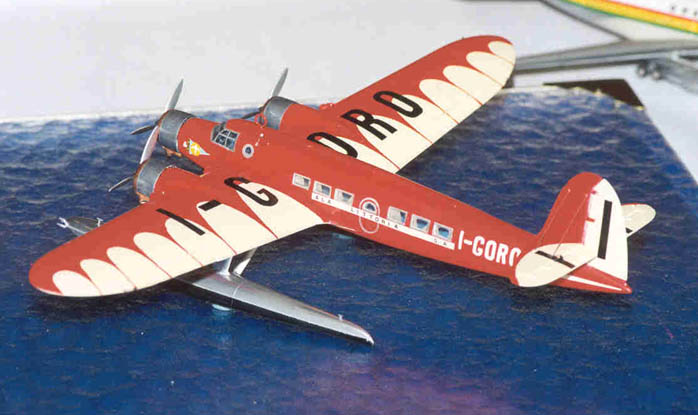
Z506 prototype model
Z.506: Prototype, single built.
Z.506A: Civilian version, 15 made
Z.506B: Military version 314 built by CANT and Piaggio.
Z.506C: Civilian version, 38 built (40 with prototypes).
Z.506S: Air-sea rescue version, conversions only
Z.506 Landplane, single converted for Mario Stoppani endurance record, cancelled.
Z.509: Larger and heavier Z.506B used as Mail Plane (3 built).

Blueprint - 4 views
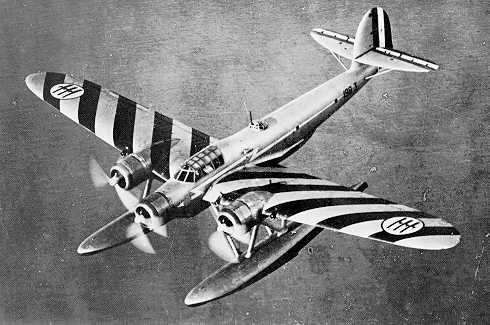
The Airone had 20 years of service under its belt, and it was first used for reconnaissance, and soon was used also as torpedo bomber when the first were dispatched to the aid of Franco in the Spanish Civil War. They remained all that time in Italian hands, with volunteers crew and sporting the spanish nationalisy black cross on a white tail. In June 1940, only 97 Airone were operational, filling two Stormi da Bombardamento Marittimo (sea bombing units) and the 31°Stormo B.M. "autonomo", Squadriglia da Ricognizione Marittima (recce squadron) with 22 planes.
The latter was based at Cagliari-Elmas airport in Sardinia. There was akso the 35° Stormo B.M. (25 Z.506) located in Brindisi, Puglia, used extensively over the Thyrrenian sea, Fench Riveria and Greece.
There were soon four Squadriglie for air-sea rescue missions formed in Orbetello: The 612ª in Stagnoni (immatriculated DAMB, GORO, BUIE, CANT, POLA) and the 614ª in Benghazi (DUCO, ALA, DODO and DAIM). The two other sections were in Torre del Lago and Leros island in the Aegean Sea, later transferred to Rhodes.
The Z.506 saw action on 17 June 1940 after French bombers attacked Elmas base, leaving 21 airmen dead, destroying several CANT Z.501 Gabbiano. A retaliation was organized in the evening of 17 June, with four Z.506Bs from 31° Stormo raiding a French objective in North Africa with two 250 kg, three 100 kg bombs each on their bomb bay. Later the Airone took part in the Battle of Calabria. During the Greek campaign, Airones were used to strike coastal targets and the Corinth canal. They were extensively used to patrol and carry troops assaultinf many Greek islands, notably Corfu, Cephalonia and Zante.

However the RAF soon started to take its toll. Thus by 1942, the model was restricted to reconnaissance and in 1943, they were used for maritime patrol and air-sea rescue, having a specialized variant made, the Z506S. The "S" stand for "Soccorso". Some were captured after September 1943 and Cassibile armistice, by the Luftwaffe in reconnaissance, transport, SAR and ambulance roles, especially in the Aegean islands. Many also landed in Spain after engine failures or other reasons and were integrated in Franco's naval air wing.
Z.506s were still targeted by Allied pilots despite the red crosses. Such instance occured on 12 June 1942, off Malta when a Hawker Hurricane from 46 Squadron shot down one Z.506, and another sent to rescue the first. It seems these "kills" did not made unanimity. One pilot at Sqn. 249 in Malta recalled Sqn Ldr Barton disapproved his conduct, but the AOC approved. One Z506 was uniquely hijacked by prisoners of war and then used by the RAF from Malta, with British markings.
CANT Z.506s were not harmless however, and they sometimes managed to shoot down the Allied aircraft attacking them, like on 7 January 1943, when one Z506B from 188ª Squadriglia inbound to Sardinia repelled two Bristol Blenheim (pilot Maresciallo Ambrogio Serri). Dorsal MG-gunner Armiere Pietro Bonannini fatally hit a first Blenheim, ditching in the sea. The second Blenheim strafed and hit Bonannini but he manage to scores hits and declared another kill. He was later awarded three Medaglie d'Argento al Valore Militare and Medaglia di bronzo al Valor Militare.
With the surrender of 8 September 1943, 70 CANT Z.506s were still operational, 30 Z.506S were integrated into the col-belligrence force, working with the Allies but Germans captured many ohers, used them between Italy, Germany, France, Yugoslavia and especially the Greek islands, even Poland. The 171ª Squadriglia operating now from Toulon was composed of mixed Italian/German crews. Others, luftwaffe officially, were flown by Italian volunteer crews in 1944 and they operated briefly from the Baltic sea, patrolling around Peenemünde. After 1945, the career of the Airone went on as long as there were parts to maintain these. They stayed operational with the new Aviazione Italiana until 1959.
Bignozzi, Giorgio. Aerei d'Italia (in Italian). Milano, Edizioni E.C.A, 2000.
Cull, Brian with Frederick Galea. 249 at Malta: Malta top-scoring Fighter Squadron 1941–1943. Wise Owl Publications 2004.
De Marchi, Italo and Pietro Tonizzo. CANT. Z. 506 "airone"- CANT. Z. 1007 "alcione" Modena 1997
Green, William. War Planes of the Second World War, V6 Floatplanes. Macdonald 1962.
Gunston, Bill. Gli aerei della seconda guerra mondiale, Alberto Peruzzo Editore, 1984.
Mondey, David. The Hamlyn Concise Guide to Axis Aircraft of WW2. Bounty Books 2006
The Illustrated Encyclopedia of Aircraft 1985 Orbis Publishing
The Complete Encyclopedia of World Aircraft. Amber Books, 2001.
on books.google.fr
on alieuomini.it cant zb airone
on books.google.fr/
gianottielio.it/
aeroflight.co.uk/
stormomagazine.com/
en.wikipedia.org CANT_Z.506_Airone
militaryfactory.com/
comandosupremo.com/
pilotfriend.com/
forum.12oclockhigh.net/
commons.wikimedia.org/ CANT_Z.506_Airone
en.wikipedia.org/ CANT_Z.506_Airone
navweaps.com Weapons/WTIT_List.php
polot.net/
scalemates.com cant-z506-airone--951230 CG trader
CG trader
Many were also used by the Aeronautica Nazionale Repubblicana and the Luftwaffe. The Z506 is probably one of the very best floatplanes ever built by Italy and often compared to the equally good and-based SM79 Sparviero. It had an old-school wooden structure, yet very sturdy for handling rough seas, was fast, had a good range was was overall reliable. The SAR used the Z506B until 1959. #ww2 #navalaviation #italiannavy #regiamarina #aviazioneausilariaperlaregiamarina #z506airone #floatplane #trimotor
Development History
Ancestor: The Z505 (1935)
 The CANT Z.506 was first envisioned in 1934 as a 12-14-seat transport twin-float floatplane for the Ala Littoria. It was to be powered by three 455 kW (610 hp) Piaggio Stella P.IX radial engines and derived from the larger and heavier Z.505 seaplane. In 1934 Ala Littoria indeed issued a specification for a new modern, fast seaplane for its commercial routes by sea. CRDA took part in the competition with Filippo Zappata's design, low-wing with three-engine and having two floats under the nacelles and moved outwards, for better stability at sea. It was a redical departure from the typical configuration used until then.
The CANT Z.506 was first envisioned in 1934 as a 12-14-seat transport twin-float floatplane for the Ala Littoria. It was to be powered by three 455 kW (610 hp) Piaggio Stella P.IX radial engines and derived from the larger and heavier Z.505 seaplane. In 1934 Ala Littoria indeed issued a specification for a new modern, fast seaplane for its commercial routes by sea. CRDA took part in the competition with Filippo Zappata's design, low-wing with three-engine and having two floats under the nacelles and moved outwards, for better stability at sea. It was a redical departure from the typical configuration used until then.
The first flight of "MM.268" took place on 10 July 1935. Tests revealed the model was underpowered, and failed to meet specs. Ala Littoria then decided to test Z.505 with a con,ventional undercarriage, hoping eliminating the drag would improved specs. chassis. It was tested alongside the CANT Z.1011. Not adopted for passengers, the Z.505 was purchased as a mail-plane from 1936, the first only entering service as "I-ZAPP" the "I" standing for Zapatta. In 1938 the Comando Aeronautica dell Egeo requisitioned it as personal aircraft of governor Cesare Maria de Vecchi (registred I-VACI) and it operated until the summer of 1941 in the Aegean Islands.
The Z506A (1935)

Z506A, transport variant

Same taking off
Meanwhile work done by Zapatta on the Z506, a remotorized variant, led to the development of the 1936 Z.506A, powered by more powerful 560 kW (750 hp) Alfa Romeo 126 RC.34 nine cylinder radial engines. Each gave 780 CV on takeoff and achieved specs, being adopted by Ala Litorria. They had a wooden structure, covered tulipier wooden lamellas. Wings were composed of three box-type spars, linked by wooden wing-ribs, themselves covered by plywood. Only the floats, 12.50 metres (41 ft) long, were made of duraluminium as they were in contact with water. They were covered in 'Chitonal', a new type of plastic like coating for perfect waterproofing.

I-ALAL, first Z506A model of Ala Littoria

I-POLA, 612ª SAR/transport stormo in Stagnoni

I-VACI, personal transport of governor Cesare Maria de Vecchi

Z506 taking off
As Ala Littoria was impressed, order was made of a serie. The Z.506A, flown mostly by Mario Stoppani, set about twenty altitude, speed and distance records for its class between 1936 and 1938. It held a world record for 308.25 km/h (191.54 mph) speed achieved over 5,000 km (3,100 mi), 319.78 km/h (198.70 mph) over 2,000 km (1,200 mi), 322.06 km/h (200.12 mph) over 1,000 km (620 mi) notably. This boosted Italy's records, a tool widely used by Mussolini to boast Italian's technology superiority, and the Z506A doubled down by a 5,383.6 km (3,345.2 mi) closed circuit at cruise speed. It also held record for the heaviest load of 2,000 kg (4,400 lb) at 7,810 m (25,620 ft) in ceiling and 5,000 kg (11,000 lb) at 6,917 m (22,694 ft). CANT delivered 15 civilian Z506A for Ala Littoria, which boasted on its own brochure such records to attract new international passengers.
The Z506B (1936)

Preserie models
Although the Miliyary at the time already had the Z506 Gabbiano based on its own specs, the Navy in particular started to be interested by the Z506 as well as the Regia Aeronautica. Both wanted a military version and Zapatta thus created the Z.506B. This version was to be armed with bombs, torpedoes, and machine guns posts and thus, needed to be more powerful, so it was procured threee 560 kW (750 hp) Alfa Romeo 127 RC 55 engines. The Z506B first flew on August 19, 1935, two prototypes were made, and they also became record breakers. In early 1936 tyhe model was accepted for production, which started in 1936, ramping up in 1937-1939.
CANT Z509
 Meanwhile a larger transport version of the Z.506A was built in 1937, the Z.509. It was Designed as larger and heavier, based on an improved, roomier Z506A fuselage and powered by three Fiat A.80 R.C.41 18-cyl. air-cooled radial piston engines. This enabled it to reach 425 km/h (264 mph, 229 kn) at 4,500 m (14,760 ft) for a cruise speed of 349 km/h (217 mph, 189 kn) and range of 3,748 km (2,329 mi, 2,024 nmi) and up to 3,988 km (2,478 mi; 2,153 nmi), 8,000 m (26,240 ft) altitude. Ala Littoria rerceived three in 1937 as Mail Plane, transatlantic postal service to South America. Further development was abandoned in 1940.
Meanwhile a larger transport version of the Z.506A was built in 1937, the Z.509. It was Designed as larger and heavier, based on an improved, roomier Z506A fuselage and powered by three Fiat A.80 R.C.41 18-cyl. air-cooled radial piston engines. This enabled it to reach 425 km/h (264 mph, 229 kn) at 4,500 m (14,760 ft) for a cruise speed of 349 km/h (217 mph, 189 kn) and range of 3,748 km (2,329 mi, 2,024 nmi) and up to 3,988 km (2,478 mi; 2,153 nmi), 8,000 m (26,240 ft) altitude. Ala Littoria rerceived three in 1937 as Mail Plane, transatlantic postal service to South America. Further development was abandoned in 1940.
Design of the Z506B

Dashboard
CANT Z.506B production by CANT ("Cantieri Riuniti dell 'Adriatico") in Monfalcone was also passed on to "Cantiere Navale Triestino" (CRDA CANT) in Finale Ligure and reached 314 floatplanes, until production was passed on to Piaggio under licence in January 1943 and reached 320+ aircraft total such was the demand. The model was mostly a roomier, more powerful variant of the Z506A. The final version had a crew of five: Pilot and co-pilot, a navigator/bombardier, and 2-3 gunners (see armament).
Fuselage
The Z506 was a large plane, measuring 19.24 m (63 ft 1 in) overall with a Wingspan of 26.5 m (86 ft 11 in) and height: 7.45 m (24 ft 5 in) from the floats to the tip of tail. In total, Wing area was 86.26 m2 (928.5 sq ft). Empty weight was 8,750 kg (19,290 lb) and up to 12,705 kg (28,010 lb) when fully loaded.The fuselage had a wooden structure covered in tulipier wooden lamellas with wings structured with three box-type spars and wooden wing-ribs, all covered by plywood. Like the Z506A, duraluminium floats were covered in artificial Chitin ('Chitonal') a composite coating using a long-chain polymer of N-acetylglucosamine, amide derivative of glucose. Present in nature it was atificially recreated as a perfect waterpoofing solution above duralumin, which did not tolerated traditional waterproofing methods. The fact of using wood was quite an advantage at the time, freeing a strategic material for other industries.
Engines
The CANT Z.506 was designed ar first as a 12-14 seat transport twin-float floatplane and initially had three 455 kW (610 hp) Piaggio Stella P.IX radial engines. They were replaced by the more powerful 560 kW (750 hp) Alfa Romeo 126 RC.34 nine cylinder radial engines rated for 780 CV on takeoff, 750 CV at 3,400 meters. These air-cooled radial piston engines were mated to 3-bladed variable-pitch propellers.Performances were very good in that category at least in 1937, with a top speed of 350 km/h (220 mph, 190 knots), a Cruise speed of 299 km/h (186 mph, 161 knots). Range was 1,998 km (1,241 mi, 1,079 nmi) with a 950 kg (2,095 lb) bomb load, more without, for a total Endurance time of 6 hours 26 minutes. It could reach a service ceiling of 7,000 m (23,000 ft) and could reach 3,999 m (13,120 ft) in 20 minutes. No better engines were provided as production went on until late 1943.
Armament
The armament consisted of a single 12.7 mm (0.50 in) Breda-SAFAT machine gun in dorsal position under a dome glasshouse, collapsible Caproni-Lanciani Delta E dorsal turret to reduce drag when not in use. It was completed by three 7.7 mm (0.30 in) machine guns, one in the ventral position, two on the sides, and one optional in the bombardier's glasshouse forward under the nose. Normal crew was thus composed of two gunners, the pilot and co-pilot, plus a navigator/radio operator. The SAR and transport variants got rid of the side MG posts, with a simple porthole instead.The Airone could carry 1,200 kg (2,645 lb) of general ordnance into its belly bomb bay or a single 816 kg (1,800 lb) torpedo. The latter was likely the F200/450 x 5.46 model, weighting 1,995 lbs. (905 kg) for 17 ft. 11 in. (5.460 m) in lenght and carrying a 441 lbs. (200 kg) warhead at 3,300 yards (3,000 m) at 40 knots, Powered by Wet-heater. This Fiume (Whitehead) model had earlier a 375 lbs. (175 kg) warhead. In German use it was called the "F5W" type.
Early Service

Ceremony for the initial Z506B records
Stellar performances meant, even without precise specs, the Airone was soon in high demand and production was ramped up, at some point before the Italian capitulation in two CANT and CNT manufacturing plant plus Piaggio. Production stopped afterwards.
Variants

Z506 prototype model
Z.506: Prototype, single built.
Z.506A: Civilian version, 15 made
Z.506B: Military version 314 built by CANT and Piaggio.
Z.506C: Civilian version, 38 built (40 with prototypes).
Z.506S: Air-sea rescue version, conversions only
Z.506 Landplane, single converted for Mario Stoppani endurance record, cancelled.
Z.509: Larger and heavier Z.506B used as Mail Plane (3 built).

Blueprint - 4 views
⚙ CANT Z506 specifications | |
| Gross Weight | 8,750 kg (19,290 lb) |
| Max Takeoff weight | 12,705 kg (28,010 lb) |
| Lenght | 19.24 m (63 ft 1 in) |
| Wingspan | 26.5 m (86 ft 11 in) |
| Height | 7.45 m (24 ft 5 in) |
| Wing Area | 86.26 m2 (928.5 sq ft) |
| Engines | 3× Alfa Romeo 126 R.C.34 9-cyl. air-cooled radial piston engines 560 kW (750 hp) |
| Popellers | 3-bladed variable-pitch propellers |
| Top Speed, sea level | 350 km/h (220 mph, 190 kn) |
| Cruise Speed | 299 km/h (186 mph, 161 kn) |
| Range | 1,998 km (1,241 mi, 1,079 nmi)loaded, 6 hours 26 minutes |
| Climb Rate | 3,999 m (13,120 ft) in 20 minutes |
| Ceiling | 7,000 m (23,000 ft) |
| Armament | 12.7 mm (0.5 in) Isotta HMG, 3 × 7.7 mm LMG, 1,200 kg (2,645 lb) bombs/torpedoes |
| Crew | 5 |
Operational Service

The Airone had 20 years of service under its belt, and it was first used for reconnaissance, and soon was used also as torpedo bomber when the first were dispatched to the aid of Franco in the Spanish Civil War. They remained all that time in Italian hands, with volunteers crew and sporting the spanish nationalisy black cross on a white tail. In June 1940, only 97 Airone were operational, filling two Stormi da Bombardamento Marittimo (sea bombing units) and the 31°Stormo B.M. "autonomo", Squadriglia da Ricognizione Marittima (recce squadron) with 22 planes.
The latter was based at Cagliari-Elmas airport in Sardinia. There was akso the 35° Stormo B.M. (25 Z.506) located in Brindisi, Puglia, used extensively over the Thyrrenian sea, Fench Riveria and Greece.
There were soon four Squadriglie for air-sea rescue missions formed in Orbetello: The 612ª in Stagnoni (immatriculated DAMB, GORO, BUIE, CANT, POLA) and the 614ª in Benghazi (DUCO, ALA, DODO and DAIM). The two other sections were in Torre del Lago and Leros island in the Aegean Sea, later transferred to Rhodes.
The Z.506 saw action on 17 June 1940 after French bombers attacked Elmas base, leaving 21 airmen dead, destroying several CANT Z.501 Gabbiano. A retaliation was organized in the evening of 17 June, with four Z.506Bs from 31° Stormo raiding a French objective in North Africa with two 250 kg, three 100 kg bombs each on their bomb bay. Later the Airone took part in the Battle of Calabria. During the Greek campaign, Airones were used to strike coastal targets and the Corinth canal. They were extensively used to patrol and carry troops assaultinf many Greek islands, notably Corfu, Cephalonia and Zante.

However the RAF soon started to take its toll. Thus by 1942, the model was restricted to reconnaissance and in 1943, they were used for maritime patrol and air-sea rescue, having a specialized variant made, the Z506S. The "S" stand for "Soccorso". Some were captured after September 1943 and Cassibile armistice, by the Luftwaffe in reconnaissance, transport, SAR and ambulance roles, especially in the Aegean islands. Many also landed in Spain after engine failures or other reasons and were integrated in Franco's naval air wing.
Z.506s were still targeted by Allied pilots despite the red crosses. Such instance occured on 12 June 1942, off Malta when a Hawker Hurricane from 46 Squadron shot down one Z.506, and another sent to rescue the first. It seems these "kills" did not made unanimity. One pilot at Sqn. 249 in Malta recalled Sqn Ldr Barton disapproved his conduct, but the AOC approved. One Z506 was uniquely hijacked by prisoners of war and then used by the RAF from Malta, with British markings.
CANT Z.506s were not harmless however, and they sometimes managed to shoot down the Allied aircraft attacking them, like on 7 January 1943, when one Z506B from 188ª Squadriglia inbound to Sardinia repelled two Bristol Blenheim (pilot Maresciallo Ambrogio Serri). Dorsal MG-gunner Armiere Pietro Bonannini fatally hit a first Blenheim, ditching in the sea. The second Blenheim strafed and hit Bonannini but he manage to scores hits and declared another kill. He was later awarded three Medaglie d'Argento al Valore Militare and Medaglia di bronzo al Valor Militare.
With the surrender of 8 September 1943, 70 CANT Z.506s were still operational, 30 Z.506S were integrated into the col-belligrence force, working with the Allies but Germans captured many ohers, used them between Italy, Germany, France, Yugoslavia and especially the Greek islands, even Poland. The 171ª Squadriglia operating now from Toulon was composed of mixed Italian/German crews. Others, luftwaffe officially, were flown by Italian volunteer crews in 1944 and they operated briefly from the Baltic sea, patrolling around Peenemünde. After 1945, the career of the Airone went on as long as there were parts to maintain these. They stayed operational with the new Aviazione Italiana until 1959.
Read More/Src
Books
Angelucci, Enzo and Paolo Matricardi. World Aircraft: World War II, Volume I. Maidenhead, UK 1978.Bignozzi, Giorgio. Aerei d'Italia (in Italian). Milano, Edizioni E.C.A, 2000.
Cull, Brian with Frederick Galea. 249 at Malta: Malta top-scoring Fighter Squadron 1941–1943. Wise Owl Publications 2004.
De Marchi, Italo and Pietro Tonizzo. CANT. Z. 506 "airone"- CANT. Z. 1007 "alcione" Modena 1997
Green, William. War Planes of the Second World War, V6 Floatplanes. Macdonald 1962.
Gunston, Bill. Gli aerei della seconda guerra mondiale, Alberto Peruzzo Editore, 1984.
Mondey, David. The Hamlyn Concise Guide to Axis Aircraft of WW2. Bounty Books 2006
The Illustrated Encyclopedia of Aircraft 1985 Orbis Publishing
The Complete Encyclopedia of World Aircraft. Amber Books, 2001.
Links
on alieuomini.it cant z81on books.google.fr
on alieuomini.it cant zb airone
on books.google.fr/
gianottielio.it/
aeroflight.co.uk/
stormomagazine.com/
en.wikipedia.org CANT_Z.506_Airone
militaryfactory.com/
comandosupremo.com/
pilotfriend.com/
forum.12oclockhigh.net/
commons.wikimedia.org/ CANT_Z.506_Airone
en.wikipedia.org/ CANT_Z.506_Airone
navweaps.com Weapons/WTIT_List.php
polot.net/
Videos
Model Kits
flugzeuginfo.net cant_z506scalemates.com cant-z506-airone--951230
3D
 CG trader
CG trader
Profiles
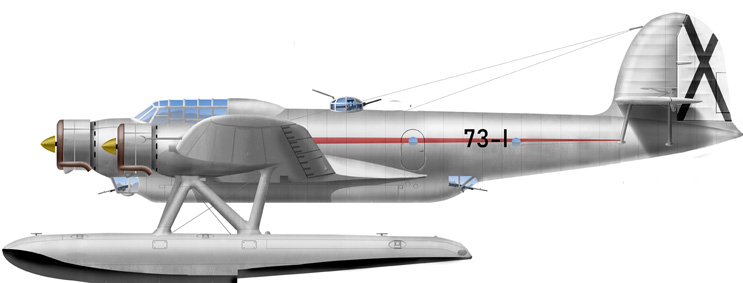
Z506B of the volunteers corps, Gruppo 2F 62/73 Spain 1938

Polish Z506B in evaluations, 1939

Z506B of 146 Sqn. 1941
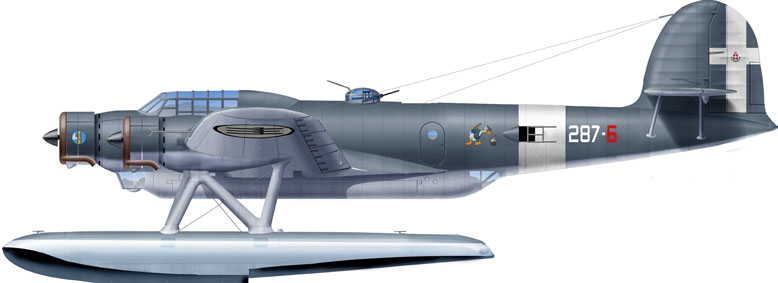
Z506 of an unknown unit, 1942
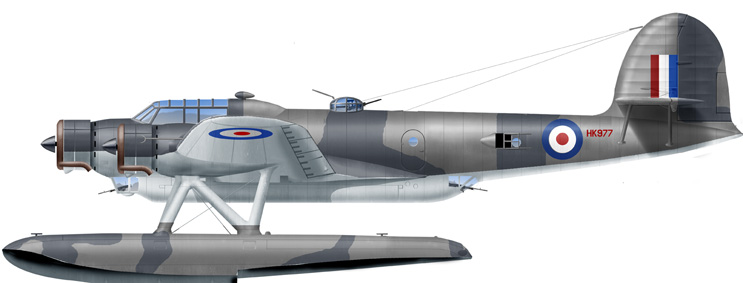
Captured Z506B at Mafafrana in Malta, 1942

Z506B of Senotstaffel 7 Sanitär 1943
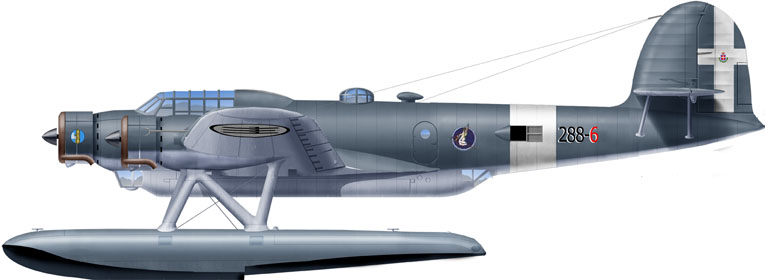
Z506B at Brindidi, Sept.1943

Z506B in Luftwaffe service, Seeenotsaffel 6 Ravenna 1944
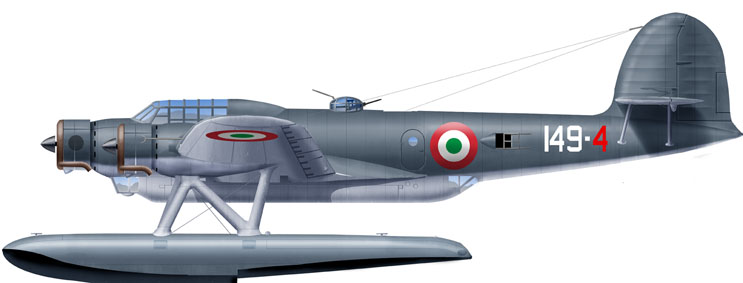
Z506B of Co-Belligerent Italian AF 1944
Photos

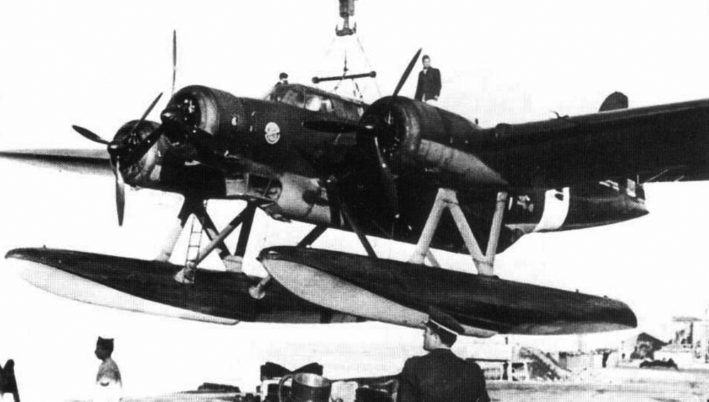


Z506B lifted off in WW2, Luce movie.
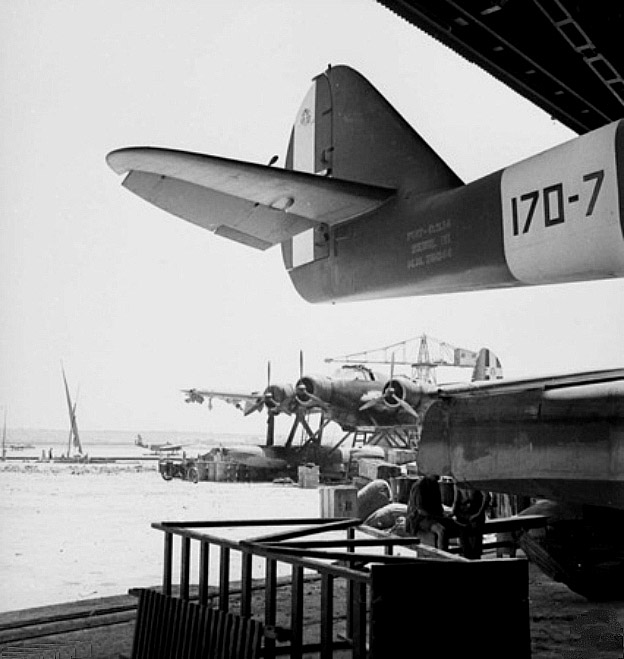
Captured Z506s at Augusta, Sept.43

Same
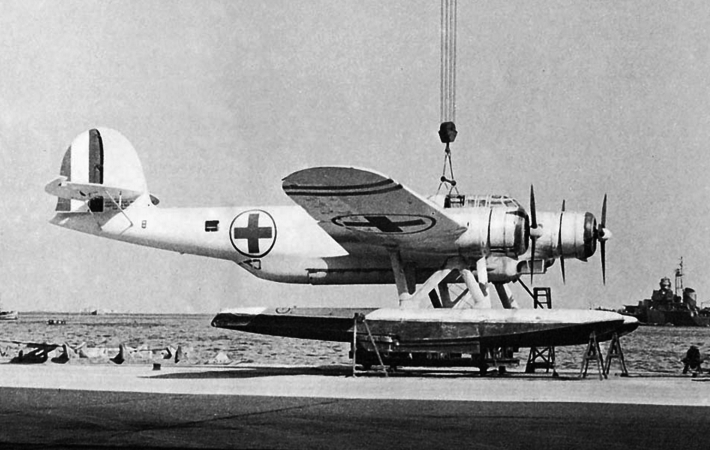
Z506C ambulance
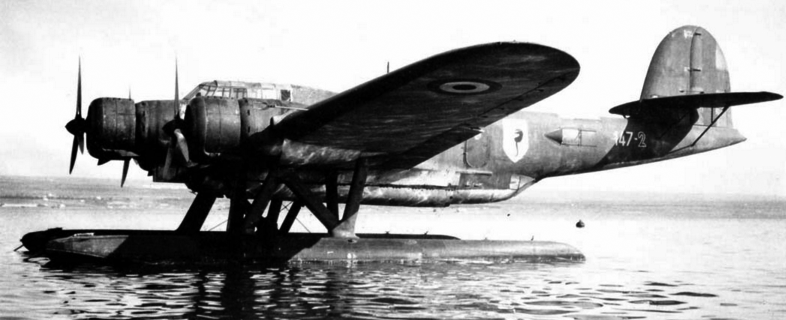
Z506B used by Cobelligerent forces
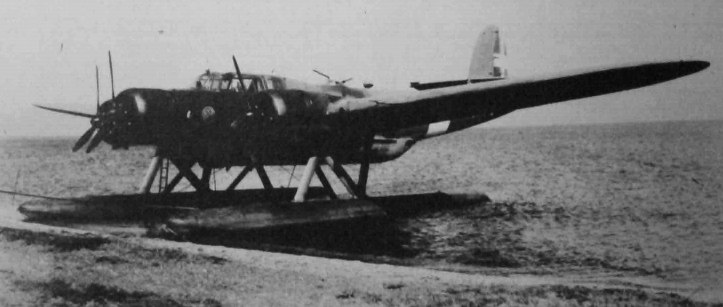
Z506B in service ww2

Former Z506 captured by RAAF airmen in Greece, British markings 1945

Z506B prototype record plane with dedicated markings and wings bands
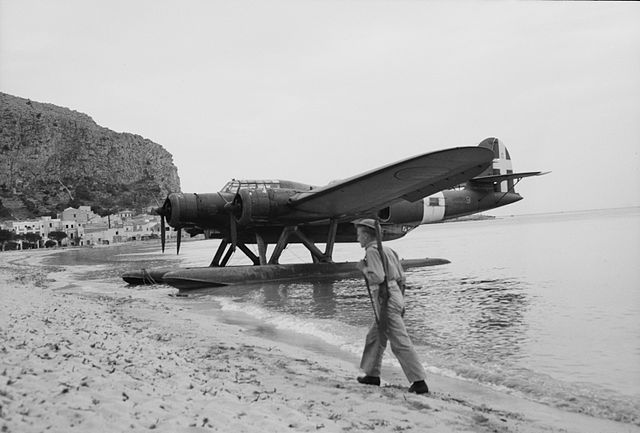

Z506 beached in Sicily 1943
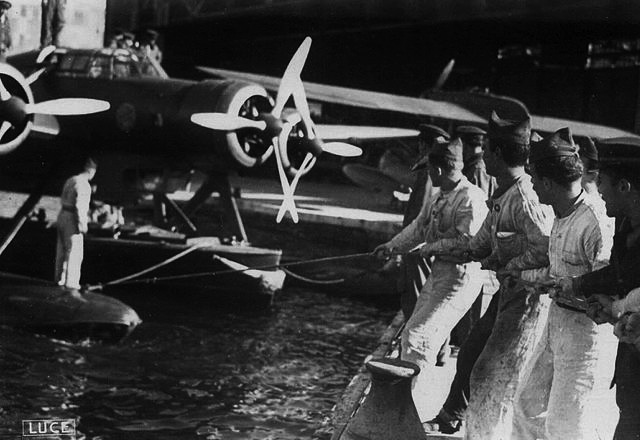
Z506 pulled out
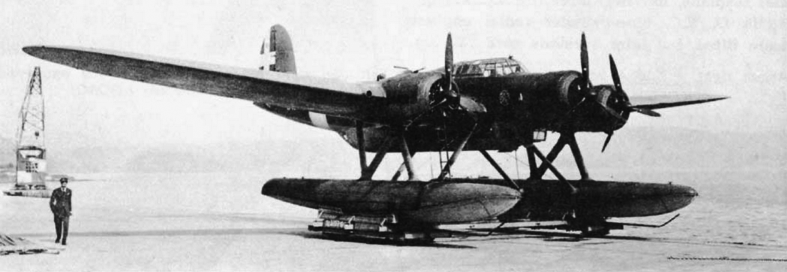
Z506B landing


Preserved model
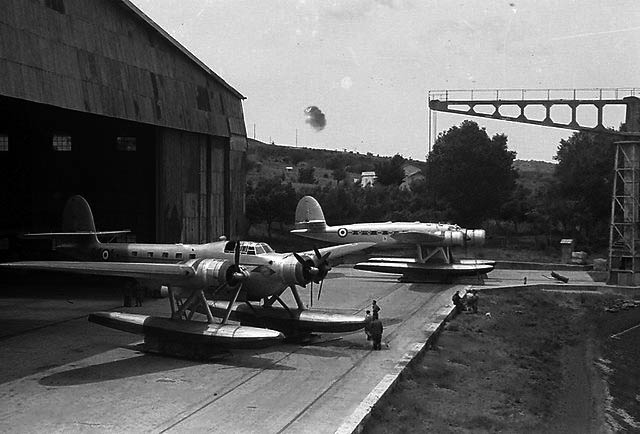
Postwar service, one Z506A and one Z506B
- Lohner E (1913)
- Macchi M3 (1916)
- Macchi M5 (1918)
- Ansaldo ISVA (1918)
- Sopwith Baby (1916)
- Short 184 (1916)
- Fairey Campania (1917)
- Sopwith Cuckoo (1917)
- Felixstowe F.2 (1917)
- Friedrichshafen FF 33 (1916)
- Albatros W4 (1916)
- Albatros W8 (1918)
- Hanriot HD.2
- Grigorovitch M5
- IJN Farman MF.7
- IJN Yokosho Type Mo
- Yokosho Rogou Kougata (1917)
- Yokosuka Igo-Ko (1920)
- Curtiss N9 (1916)
- Aeromarine 39
- Vought VE-7
- Douglas DT (1921)
- Boeing FB.5 (1923)
- Boeing F4B (1928)
- Vought O2U/O3U Corsair (1928)
- Blackburn Blackburn (1922)
- Supermarine Seagull (1922)
- Blackburn Ripon (1926)
- Fairey IIIF (1927)
- Fairey Seal (1930)
- LGL-32 C.1 (1927)
- Caspar U1 (1921)
- Dornier Do J Wal (1922)
- Rohrbach R-III (1924)
- Mitsubishi 1MF (1923)
- Mitsubishi B1M (1923)
- Yokosuka E1Y (1923)
- Nakajima A1N (1927)
- Nakajima E2N (1927)
- Mitsubishi B2M (1927)
- Nakajima A4N (1929)
- CANT 18
WW1
✠ K.u.K. Seefliegerkorps:
 Italian Naval Aviation
Italian Naval Aviation
 RNAS
RNAS
 Marineflieger
Marineflieger
 French Naval Aviation
French Naval Aviation
 Russian Naval Aviation
Russian Naval Aviation
 IJN Air Service
IJN Air Service
 USA
USA
Interwar
 Interwar US
Interwar US
 Interwar Britain
Interwar Britain
 Interwar France
Interwar France
 Interwar Germany
Interwar Germany
 Interwar Japan
Interwar Japan
 Interwar Italy
Interwar Italy
- Curtiss SOC seagull (1934)
- Grumman FF (1931)
- Curtiss F11C Goshawk (1932)
- Grumman F2F (1933)
- Grumman F3F (1935)
- Northrop BT-1 (1935)
- Grumman J2F Duck (1936)
- Consolidated PBY Catalina (1935)
- Brewster/NAF SBN-1 (1936)
- Curtiss SBC Helldiver (1936)
- Vought SB2U Vindicator (1936)
- Brewster F2A Buffalo (1937)
- Douglas TBD Devastator (1937)
- Vought Kingfisher (1938)
- Curtiss SO3C Seamew (1939)
- Douglas SBD Dauntless (1939)
- Grumman F4F Wildcat (1940)
- F4U Corsair (NE) (1940)
- Brewster SB2A Buccaneer (1941)
- Grumman TBF/TBM Avenger (1941)
- Consolidated TBY Sea Wolf (1941)
- Grumman F6F Hellcat (1942)
- Curtiss SB2C Helldiver (1942)
- Curtiss SC Seahawk (1944)
- Grumman F8F Bearcat (1944)
- Ryan FR-1 Fireball (1944)
- Douglas AD-1 Skyraider (1945)
Fleet Air Arm
- Fairey Swordfish (1934)
- Blackburn Shark (1934)
- Supermarine Walrus (1936)
- Fairey Seafox (1936)
- Blackburn Skua (1937)
- Short Sunderland (1937)
- Blackburn Roc (1938)
- Fairey Albacore (1940)
- Fairey Fulmar (1940)
- Grumman Martlet (1941)
- Hawker sea Hurricane (1941)
- Brewster Bermuda (1942)
- Fairey Barracuda (1943)
- Fairey Firefly (1943)
- Grumman Tarpon (1943)
- Grumman Gannet (1943)
- Supermarine seafire (1943)
- Blackburn Firebrand (1944)
- Hawker Sea Fury (1944)
IJN aviation
- Aichi D1A "Susie" (1934)
- Mitsubishi A5M "Claude" (1935)
- Nakajima A4N (1935)
- Yokosuka B4Y "Jean" (1935)
- Mitsubishi G3M "Nell" (1935)
- Nakajima E8N "Dave" (1935)
- Kawanishi E7K "Alf" (1935)
- Nakajima B5N "Kate" (1937)
- Kawanishi H6K "Mavis" (1938)
- Aichi D3A "Val" (1940)
- Mitsubishi A6M "zeke" (1940)
- Nakajima E14Y "Glen" (1941)
- Nakajima B6N "Jill" (1941)
- Mitsubishi F1M "pete" (1941)
- Aichi E13A Reisu "Jake" (1941)
- Kawanishi E15K Shiun "Norm" (1941)
- Nakajima C6N Saiun "Myrt" (1942)
- Yokosuka D4Y "Judy" (1942)
- Kyushu Q1W Tokai "Lorna" (1944)
Luftwaffe
- Arado 196 (1937)
- Me109 T (1938)
- Blohm & Voss 138 Seedrache (1940)
Italian Aviation
- Savoia-Marchetti S.55
- IMAM Ro.43/44
- CANT Z.501 Gabbiano
- CANT Z.506 Airone
- CANT Z.508
- CANT Z.511
French Aeronavale
- GL.300 (1926-39)
- Levasseur PL.5 (1927)
- Potez 452 (1935)
- Loire 210 (1936)
- Loire 130 (1937)
- LN 401 (1938)
Soviet Naval Aviation
- Shavrov SH-2 (1928)
- Tupolev TB-1P (1931)
- Beriev MBR-2 (1930)
- Tupolev MR-6 (1933)
- Tupolev MTB-1 (1934)
- Beriev Be-2 (1936)
- Polikarpov I16 naval (1936)
- Tupolev MTB-2 (1937)
- Ilyushine DB-3T/TP (1937)
- Beriev Be-4 (1940)
-
Skoda Š-328V
R-XIII Idro
Fokker C.XI W (1934)
WW2
- De Havilland Sea Vixen
- Hawker Sea Hawk
- Supermarine Scimitar
- Blackburn Buccaneer
- Hawker Sea Harrier
- Douglas A4 Skyhawk
- Grumman F9F Panther
- Vought F8 Crusader
- McDonnell-Douglas F-4 Phantom-II
- North Am. A5 Vigilante
- TU-142
- Yak 38 forger
☢ Cold War
✧ NATO
 Fleet Air Arm
Fleet Air Arm
 US Navy
US Navy
☭ Warsaw Pact
Merch

Seafire Mark 45; HMS Pretoria Castle

Zeros vs its aversaries

Aichi D3A “Val” Junyo

Mitsubishi A5M poster

F4F wildcat

Macchi M5

SBD Dauntless Coral Sea

SBD Dauntless USS Enterprise

SBD-4 CV22